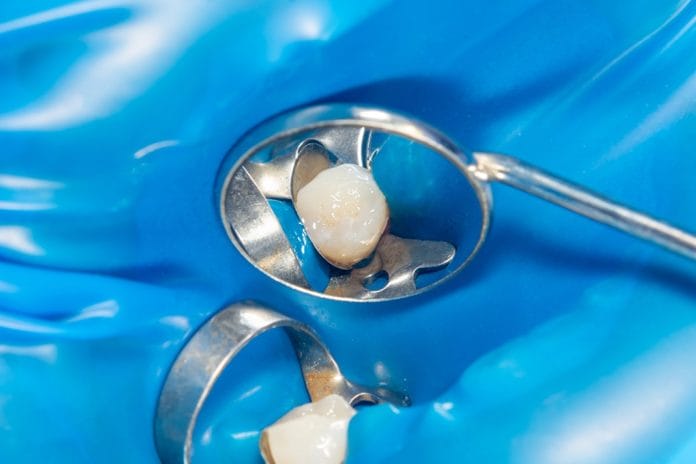We are all very aware of how effective dental sealants are against caries. The thin, little barriers placed in the pits and fissures of molar and premolar teeth have been around in one form or another since 1966. They have acted as a formidable defense in the fight against plaque and bacteria that would normally cause carious lesions.
You may have wondered, though, if there is a difference in how the sealants are applied that directly influence long-term success? Many studies compare the effectiveness of a traditional 37% phosphoric acid etch to a one-step, self-etching adhesive.
Studies indicate that when the teeth are prepped for sealants in the same method−such as when pits and fissures are cleaned with pumice and bristle brush and then rinsed prior to etching and sealant placement−there are significant differences found between the two techniques. Traditional etch is placed on the prepared tooth for 20 seconds, followed by rinsing for 30 seconds and drying with an air syringe for 15 seconds. With self-etch, the blister pack is activated by pressure to empty the liquid from the first into the second reservoir. Then the liquid mixture is emptied into the last section of the blister pack that contains the microbrush, making the solution ready for use.
Etching, priming, and bonding are done in one step while the adhesive is being brushed on. The adhesive is applied onto the occlusal fissures and rubbed for 15 seconds using moderate pressure. A gentle stream of air is used to dry the adhesive to a thin film thoroughly, followed by placing the sealant.
Long-term Effectiveness
After a six-month duration, the results show a significant difference in the caries scores between the conventional acid etch group and the self-etch group. Members of the self-etch group were more likely to show early enamel caries than those in the conventional acid etch group. This can be explained by the sealants being significantly more likely to fail in the self-etch group, and the pit-and-fissure system no longer being protected by the sealant.
With those results, you may be thinking that the traditional etch system is the best way to go, but there are more factors to consider.
You may have already experienced the nervous, wiggly child in your chair who needs sealants. If not, just wait; you will. In this scenario, you may find that the one-step etch method is a much better and safer option. This is very easy for the clinician to use, and it’s more comfortable for the patient, as they are not subjected to two-step washing and drying method of the traditional etch system. They are not subjected to the possible bitter taste of the etch, and it streamlines the procedures with fewer steps for the patient to endure.
The more comfort we can offer to children during these procedures, which help facilitate a favorable outcome and long-term comfort level with the dental office, I am totally on board with it.
So, in conclusion, studies show that the traditional etch method is preferred over the self-etch due to the sealant failure and in turn, higher caries rates. However, the ease of application and comfort level lies with the preferred method of the one-step etch.
In the majority of offices, the integrity of sealants is tested during a recall appointment. Sealants are reapplied or touched up, if needed, to prevent caries formation in the pit-and-fissure system. I feel that both the one-step and two-step methods of etching can be used according to the needs of the patient for the best outcome.
Before you leave, check out the Today’s RDH self-study CE courses. All courses are peer-reviewed and non-sponsored to focus solely on high-quality education. Click here now.
Listen to the Today’s RDH Dental Hygiene Podcast Below:
References
- Velpula, L., Nirmala, S.V., Mallineni, S.K., Nuvvula, S. (2018) The effectiveness and ease of a one-step conditioning agent with conventional acid etch and priming in the placement of sealants: A 6-month follow-up. Int J Pedod Rehabil. 2018: 3:23-7.
- Antonson, S.A., Antonson, D.E., Brener, S., Crutchfield, J., Larumbe, J., Michaud, C., et al. (2012) Twenty-four-month clinical evaluation of fissure sealants on partially erupted permanent first molars: Glass Ionomer versus resin-based sealant. J Am Dent Assoc. 2012: 143:115-2.
- Saha, A., Kamatham. R., Mallineni, S.K., Nuvvula, S. (2016) A cross-sectional survey on children perception of isolation methods for restorative procedures and influence of cognitive development. SRM J Res Dent Sci. 2016: 7:219-2.












